Projects
CongoFORCE (2020-2030)
Forest dynamics in the Congo Basin driven by climate change: evidence from fossil charcoal, carbon fluxes and wood formation (BELSPO FED-tWIN)
Contact: Wannes Hubau, Joris Van Acker, Jan Van den Bulcke, Hans Beeckman
Tropical forests provide a variety of ecosystem services on the local and global scale. However, intact rainforests have been in peril over the last decades due to severe dieback of trees, probably due to changing environmental conditions. Most insights in the responses of vegetation to climate depend on short-term records (annual or decadal-scale), yet short-term sensitivities do not necessarily translate into long-term responses (centennial or millennial-scale). As such, a long-term perspective of linkages between climate and vegetation dynamics is imperative to accurately predict the 21st century fate of Earth’s rainforests. Therefore the general ambition of this project is to improve our understanding of long-term tropical forest sensitivity and resilience to climate change, by comparing multi-timescale records of the best possible natural archives of forest dynamics: wood and fossil charcoal. This profile will focus on the Congo Basin, which represents the World’s second largest contiguous area of rainforest and plays a major role in global biogeochemical and climate cycles, while it has been largely underrepresented in long-term studies due to a lack of ground-based data.
MLMWood (2023-2027)
Multi-level Modelling of the Mechanical Properties of Wood Products using the Theory of Composite Materials (CSC)
Contact: Bingrui Chen, Wim Van Paepegem, Joris Van Acker, Jan Van den Bulcke
Wood possesses a natural composite structure that bestows excellent mechanical properties and aesthetic appeal unrivaled by other natural or manufactured materials. With the increasing use of wood in structural applications, understanding its mechanical response has become more important. Multi-level modelling based on the theory of composite materials (TCM) has emerged as a promising approach to elucidate the wood’s complex mechanical properties across diverse length scales. This project aims to develop a multi-scale model of wood based on its hierarchical and random variations microstructure which is captured by micro-computed tomography. The model will ultimately be trying to predict the loading capacity and damage evolution in sensitive regions of wood products and frames. Linking microstructural attributes to macroscopic performance is expected to enrich comprehension of the mechanical behavior of wood and reveal how its composition enables beneficial properties while also conferring vulnerability. This knowledge will encourage innovation in wood products, structural design, and potentially even biomimetic materials.
CIRCOMP (2024-2026)
Developing a circular steel-timber composite floor system through innovative and demountable shear connections (FWO)
Contact: Liselotte De Ligne
This project aims at the development and characterization of an innovative and efficient connection for steel-timber composite (STC) floor and deck systems designed for easy disassembly and reuse, supporting therefore the circularity of material use in the construction industry. The technological solution that will be developed will match the latest constructional needs and trends, such as structural detailing and design for less raw material consumption and minimized waste thanks to a circular cradle-to-cradle strategy, new straightforward guidance towards an increased use of environmentally-friendly bio-based materials in composite solutions and assessment of service life and durability. To achieve this goal, an innovative steel-to-timber connection will be developed, optimized and studied through experimental tests combined with finite-element numerical simulations, in addition to establishing and validating analytical design models. A mechanical characterization of the developed STC solution, including the impact of hygroscopic deformations of timber and a durability assessment, will be accomplished, ensuring both circularity and safety during the service life of the structure. A design for disassembly of the STC connection will be achieved, directly implementable at industrial level, contributing to a rapid transition to a climate-neutral and resource efficient construction industry by 2050.
Enhancewood (2022-2026)
Nano-chemical treatment of wood for enhanced fungal and fire resistance (FWO)
Contact: Marcy Durimel, Joris Van Acker, Andre Skirtach
Wood is regarded as an eminent material for future green building. It allows to underpin several of the United Nations sustainable development goals and is regarded critical for the Green Deal objectives of the EU. Nevertheless, to enhance the potential it needs to be better understood in respect of fit-for-purpose based solutions to control both resistance against fire and fungal decay. In this project, we will apply new nano-chemicals and develop custom-made multimodal microscopy approaches to come to a breakthrough in wood protection technology. Both new insights in the use of nanochemicals and the now available research techniques on cell wall level create the momentum to enable this breakthrough in providing wood products with fully controlled properties. This new technology should not only be valid for softwoods and hardwoods, both easy treatable and refractory, but also should perform adequately over time even in an environment prone to leaching. Increased service life both related to fungal decay and fire safety will be obtained by nanotechnological treatments that allow to reinvent some critical and innovative building products like CLT (cross laminated timber).
Untangling forest history (2022-2026)
Untangling forest history in the Yangambi Biosphere Reserve (Tshopo, D.R. Congo) through fossil charcoal analysis (ERAIFT-Agrinatura individual PhD grant to Alain Kadorho Sheria)
Contact: Wannes Hubau, Alain Kadorho, Jan Van den Bulcke
COBARCHIVES (2023-2026)
A long-term view of Congo Basin forest resilience from fossil charcoal and living trees (FWO)
Contact: Wannes Hubau, Sara Motte, Marijn Bauters
So far, little is known about the influence of soil properties on forest structure, species composition and carbon fluxes in the Congo Basin. To fill this knowledge gap, the COBARCHIVES project aims to (i) do a thorough analysis of all current available soil data in the Congo Basin, (ii) enlarge the database by taking new soil samples and (iii) investigate the effects of nutrient depletion on the productivity of repeatedly burned pioneer forests. The first two objectives focus on the relation between soils and forest dynamics in old growth primary forests, while the third one addresses the effect of increasing agricultural pressure on soil parameters and consequently ecosystem functioning. Combined, these research efforts will help us gain insights into the influence of soils on the future of forests and agriculture in the Congo Basin.
DAMOCO (2023-2026)
Closing the DAta gap to develop Land Surface MOdels for COngo Basin forests (BELSPO-BRAIN)
Contact: Wannes Hubau, Blanca Van Houtte Alonso, Jan Van den Bulcke, Steven de Hertog, Hans Verbeeck, Pascal Boeckx, Marijn Bauters, Hans Beeckman, Jean-Remy Makana, Corneille Ewango, Bhély Angoboy, John Tshibamba, Adeline Fayolle
The DAMOCO project is funded under the second phase of the BRAIN-be 2.0 (Belgian Research Action through Interdisciplinary Networks) program (2018-2023) of BELSPO (CONTRACT NR B2/223/P1/DAMOCO). This is a consortium project between UGent (main PI Hans Verbeeck, co-PI’s Pascal Boeckx and Marijn Bauters), the Africamuseum (co-PI’s Wannes Hubau and Hans Beeckman), ULiège (co-PI Adeline Fayolle) UNIKIS (co-PI’s Jean-Remy Makana and Corneille Ewango) and INERA (co-PI’s Bhély Angoboy and John Tshibamba). The general ambition of the DAMOCO project is to contribute to closing the Congo Basin forest data gap and improve Land Surface Models to capture its biodiversity and carbon dynamics. To reach this ambition, we will first collect new data on permanent forest inventory plots scattered across the Congo basin. The data will span multiple time scales by combining four different methodological approaches: (i) eddy-covariance data from CongoFlux (an ICOS ESFRI station) will provide (sub-)daily measurements of carbon and water fluxes; (ii) repeated tree measurements will reveal decadal-scale changes in the carbon balance, (iii) measuring a wide array of tree traits on the plots will allow in-depth analysis of decadal-scale changes in taxonomic and functional composition, and (iv) identification of radiocarbon dated fossil charcoal will reveal century-scale and millennial-scale changes in biodiversity. By themselves, those data will shed light on the short- and long-term resilience of critical Congo Basin forest ecosystem functions. Secondly, we will combine all collected data to parameterize and validate the Ecosystem Demography model (ED2) for the Congo Basin forest. Finally, we will use the newly parameterized and validated model to simulate future dynamics of Congo Basin biodiversity and carbon balance under different emission scenarios. The project will have major scientific impact because the data will be made available through well-known and widely used scientific repositories, which all struggle with a common data gap in the Congo Basin. The project will contribute to capacity building by coaching Congolese students to become future science leaders. Finally, at the end of this project the Democratic Republic of Congo will have refined information on its past, present and future forest ecosystem and climate services, which will foster major policy impact at the national and international level.
PopMech (2022-2026)
The effect of genetics and environment on poplar wood properties at meso level (CSC)
Contact: Ning Liu, Jan Van den Bulcke, Joris Van Acker
In this project we want to study the response of growth to climate and wood properties of Populus by studying different climate zones. We will collect wood cores in various regions from China and Europe and extract different sources of information. Meteorological data and phenological information will be correlated with the wood properties of poplar in order to reveal the growth mechanism of poplar. In addition, future poplar growth prediction, the correlation of vessels and juvenile area, and the correlation of wind and tension wood will also be carried out.
Game-changing designs (2022-2025)
Game-changing designs for sustainable and affordable protection of mass timber products against fungal decay (FWO junior postdoc)
Contact: Liselotte De Ligne
Construction timber and engineered wood products are key building elements in the transition towards a more sustainable building industry. However, many wooden building elements are (to some extent) biodegradable which makes them vulnerable to decay risk when used in applications with a fungal decay risk. If they are to become widely applicable, there is need for affordable and sustainable wood protection methods that can be applied on a large scale. While wood and wood products are highly tailorable, most efforts are focused on optimizing mechanical properties, while great potential for improving service life through material design remains largely underexplored. In this project, we investigate how smart material design can be used as a tool to extend service life of construction timber and engineered wood products. Cutting-edge characterization tools are applied to fundamentally understand the mechanisms behind different structural modification strategies at cellular level for improvement and optimal implementation in smart material design. The influence of these material designs on moisture dynamics and decay progress are assessed with X-ray CT and MRI. With this research we aim to develop game-changing designs that can be employed for affordable and sustainable protection of timber-frame and massive timber constructions..
AF4EU (2023-2025)
Agroforestry Business Model Innovation Network (HorizonEurope)
Contact: Tobi Hallez, Joris Van Acker
Agroforestry (AF) is a type of climate-smart agriculture (CSA) practice of deliberately integrating woody vegetation (trees or shrubs) with crop and/or animal systems to benefit from the resulting ecological and economic interactions. AF4EU is based on the excellent results of our previous project – AFINET – with more than 1300 unique stakeholders reached and the creation of 12 innovation videos, 45 factsheets, 30 technical articles and more than 100 practice abstracts. For this HEU project, partners from the previous project have team up with new others, to both extend the knowledge gather in other areas of Europe and complete the innovations with the creation of business models and the strengthen of extension services. The AF4EU Consortium is composed by 12 partners from 10 different countries and counts with the contribution of 5 associations. AF4EU will continue to promote agroforestry in Europe through the development of a multi-actor interactive and innovation-driven expanded agroforestry network, based on the sharing of successful practical experiences. UGent-Woodlab is responsible for the Belgian RAIN (Regional Agroforestry Innovation Network) and focusses on the tree component for the business models.
See https://af4eu.eu/ for more information.
SUSTRACK (2022-2025)
Supporting the identification of policy priorities and recommendations for designing a sustainable track towards circular bio-based systems (HorizonEurope)
Contact: Tobi Hallez, Joris Van Acker
The transition from linear fossil-based systems to circular and bio-based systems represents an opportunity and a suitable pathway for achieving several SDGs. Circular bio-based systems depict a great opportunity to reconcile sustainable long-term growth with environmental protection through the prudent use of renewable resources for industrial purposes. This needed transition is a complex process, which does not simply require innovative technologies from the supply-side, but also societal transformations based on a multi-actor process. The circular bioeconomy meta-sector may be a good candidate to put forward a new economic model, which requires transformative policies, purposeful innovation, access to finance, risk-taking capacity as well as new and sustainable business models and markets. A critical assessment of the environmental, social and economic impacts of the current linear fossil-based economy, as well as of the improvement potential associated with circular bio-based systems, is needed to underpin the identification of policy priorities. UGent-Woodlab mainly deals with the construction sector and the use of wood and other bio-based materials.
See https://sustrack.eu/ for more information.
Brabantse Wouden BWCHP (2023-2025)
Brabantse wouden als circulair hout platform (VLAIO)
Contact: Joris Van Acker
In het kader van een VLAIO-project wordt onderzocht hoe in het Nationale Park ‘Brabantse Wouden’ de bosfuncties biodiversiteit en beleving duurzaam kunnen samengaan met de uitbouw van een circulair lokaal houtplatform. Die opschaling kan gebeuren door het lokaal geproduceerd hout maximaal waardevol en hoog in de waardeketen in te zetten, met nadruk op een klimaatrobuust boomsoortenassortiment en met inzet van vernieuwende logistieke en bos- en verwerkingstechnieken. Een partnerschap die de hele keten van boom tot product beslaat, zal via piloottesten de fundamenten leggen voor een lokaal houtecosysteem. Dit living lab is een samenwerking tussen Natuurinvest, Openhuis, Levuur, Willy Caluwaerts, Jadimex, Atelier Circuler, UGent-Woodlab en Vrienden van Heverleebos en Meerdaalwoud.
Hennep+ (2023-2025)
(VLAIO)
Contact: Joris Van Acker
Het doel van dit living lab is het creëren van een web aan mogelijkheden voor de optimale en duurzame waardecreatie uit industriële hennep en andere duurzame bio-gebaseerde materialen en processen of combinaties van deze materialen voor de Vlaamse maak- en bouwindustrie. Hierbij kan men stellen dat de technologische en wetenschappelijke kennis rond hennep aanwezig is, maar dat het systeemdenken, circulair design en circulaire business modellen en het co-creëren met diverse actoren grotendeels ontbreken. Dit living lab werkt aan een betere afbakening van de uitdagingen en opportuniteiten, met inbegrip van een netwerk van actoren die bereid zijn rond dit thema te werken. Er worden prototypes en karakterisering van de impactfactoren ontwikkeld, gelinkt aan de materiaalvoetafdruk- en vermindering van de broeikasgasuitstoot. Op systeemniveau werkt men aan een mindset shift rond de waardeketen van hennep.
TREE4FLUX (2022-2025)
Monitoring trees in intensive, large-scale and long-term inventory plots for scaling eddy covariance carbon dioxide fluxes in Congo basin forests (BELSPO ESFRI-FED)
Contact: Wannes Hubau, Pauline Hicter, Pascal Boeckx, Hans Verbeeck, Marijn Bauters, Hans Beeckman
The TREE4FLUX project is funded under the first phase of the ESFRI-FED program (Support for the valorisation of federal components of distributed and virtual ESFRI research infrastructures; 2021 – 2026) of BELSPO (CONTRACT NR EF/211/TREE4FLUX). This is a consortium project between the Africamuseum (PI Wannes Hubau, co-PI Hans Beeckman) and UGent (co-PI’s Pascal Boeckx, Hans Verbeeck, Marijn Bauters). The TREE4FLUX project supports the participation of the Wood Biology Service of the Royal Museum for Central Africa (RMCA) in the UGent-led eddy covariance (EC) CongoFlux tower located in Yangambi (D.R.Congo). The first ambition of TREE4FLUX is to complete the labelling process for CongoFlux and subsequently maintain the label of associated station in the Integrated Carbon Observation System (ICOS), by generating the first continuous multi-annual series of greenhouse gas (GHG) fluxes measured above African old-growth rainforest. A second ambition is to tackle the shortcomings inherent to the ‘top-down’ EC approach, by capitalizing on combined RMCA and UGent expertise to develop, consolidate and structurally organise ‘bottom-up’ tree monitoring infrastructures in and around the CongoFlux footprint (the area actually monitored by the EC equipment). These infrastructures will consist of three types of permanent forest inventory plots (intensive, large-scale and geographically dispersed) and the in situ RMCA-led Yangambi wood laboratory. The bottom-up data will be used to validate, complement and strengthen top-down CO2 flux data and will be uploaded as ancillary data to the ICOS carbon portal, which will firmly anchor the position of the combined infrastructures within ICOS. By combining RMCA and UGent-led infrastructures, TREE4FLUX will turn Yangambi into the first ‘supersite’ to measure CO2 fluxes in the African tropical rainforest. Combined data will enable robust upscaling of CO2 fluxes, providing benchmark estimates for (inter)national policy, which will further valorise the infrastructures. CongoFlux and its bottom-up infrastructures will complement the ICOS-labelled Guyaflux station in French Guyana. Together, these stations will enable ICOS to capture tropical forest ecosystem responses to climate change and contribute to a complete understanding of global GHG cycles.
CANOPI (2022-2025)
Central African Network of Observatories of troPIcal tree and forest functioning (FWO/FNRS EOS)
Contact: Wannes Hubau, William Verbiest, Kathy Steppe, Adeline Fayolle, Jean-François Bastin, Katharine Abernethy, Alfred Ngomanda, Bhély Angoboy
The CANOPI project is funded under the "EOS - Excellence of Science" 2021 call of FWO and FNRS (EOS reference number: O.0026.22). This is a consortium project between ULiège (main PI Adeline Fayolle, co-PI Jean-François Bastin), UGent (co-PI’s Wannes Hubau and Kathy Steppe), CENAREST-Gabon (co-PI’s Katharine Abernethy and Alfred Ngomanda) and INERA-DRCongo (co-PI Bhély Angoboy). The general ambition of the CANOPI project is to contribute to understanding resilience of central African forests to climate change. While deforestation and forest degradation remain the top human threats on tropical forests, climate is expected to progressively shift to drier conditions in the tropical belt, adding an extra pressure on the system with large-scale die-back of tropical trees. The situation might be even more alarming in Africa, where climate is already drier and more seasonal than in the other tropical regions. Whether tropical forests in central Africa will be sensitive to drier conditions –because trees are already limited by water availability– or resistant –because species are adapted to seasonal drought– is the ambitious challenge CANOPI aims to tackle. We propose a pioneering, transdisciplinary approach that will address four pressing fundamental scientific questions in specific work packages (WP) with a fifth WP dedicated to upscaling.
CONTexT (2023-2025)
CONgolese heritage objects examined and contextualized through X-ray Tomography (BELSPO-BRAIN)
Contact: Sofie Dierickx, Siska Genbrugge, Hans Beeckman, Jan Van den Bulcke
The CONteXT research project aims to add to the - often scarce - knowledge about the collection of Congolese wooden heritage objects at the Royal Museum for Central Africa by letting the objects themselves speak through the analysis of their material history. By processing high-resolution X-ray microtomography (μCT) imagery of one hundred Congolese objects, information about the objects' original context and history can be non-invasively derived. The knowledge extracted from the scans will help heritage experts at the museum gain a better understanding of the cultures they study: how were the objects in the collection constructed, what materials were incorporated and how were the objects used. The study will also help museum curators understand the ageing processes of materials, the sensitivity of materials to changes in different environments and any ancient conservation treatments used to preserve objects; ultimately to improve the care and preservation of the objects in the collection.
Through the study of material clues, the CONteXT project hopes to achieve a comprehensive understanding of the objects' materials, which is inextricably linked to the understanding of the object's cultural meaning and value: the object's context. To reconstruct this comprehensive context, the project will engage members of the objects' source communities in a knowledge exchange network. In collaboration with heritage researchers, creators or users from the Democratic Republic of Congo and from the Belgian diaspora, the project aims to gain an in-depth understanding of the material and immaterial context of the objects. The network will also enable open discussion of the often overlooked ethical questions that arise when studying African heritage objects. Through the partnership with the objects' source communities, CONteXT will gather perspectives on sampling, visualising and uncovering sensitive or secret information of African heritage objects.
Building carbon stocks in the DRCongo (2021-2025)
Building carbon stocks in regrowing forests in the Democratic Republic of the Congo through planting and natural regeneration (PilotMAB)
Contact: Brice Djiofack, Wannes Hubau , Hans Beeckman
Intact tropical forests act as large carbon sinks, hence mitigating climate change. However, alarming recent studies showed that the pan-tropical intact forest carbon sink has saturated and will start declining soon. Hence, we cannot count on remaining intact tropical forests alone to halt increasing atmospheric carbon concentrations and avoid a runaway greenhouse effect scenario.
Therefore, (inter)national policy makers increasingly invest in forest restoration. This is most effective in (sub)tropical forest nations where trees grow quickly. Up to now, more than 40 countries have pledged to restore a total of more than 300 million ha of (sub)tropical forests. Recent modelling analysis predicted that this additional sink would remove 10% of residual carbon emissions, which would significantly contribute to keep global warming under 1.5 °C above pre-industrial levels, as targeted by the Paris Agreement. However, estimation of this additional reforestation sink relies on very few actual field data.
Therefore, this PhD aims at refining this estimate by reassessing old and generating new ground data from the Democratic Republic of the Congo. The focus will be on the Yangambi and Luki Man-and-the-Biosphere (MAB) Reserves, which have acted as ‘living laboratories’ for global change studies since the colonial epoch.
ACTREAL (2021-2025)
ACcurate Temperature REconstructions and climate change mapping in tree rings of Ancient bristlecone pines, the Longest-living trees in the world (FWO)
Contact: Vladimir Matskovsky, Jan Van den Bulcke, Tom De Mil, Luc Van Hoorebeke, Valerie Trouet, Charlotte Pearson, Matthew Salzer
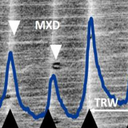
More info on https://www.actreal.ugent.be
SmartWoodID (2021-2024)
Smart classification of Congolese timbers (BELSPO-BRAIN)
Contact: Ruben De Blaere, Jan Van den Bulcke, Tom De Mil, Wannes Hubau , Hans Beeckman
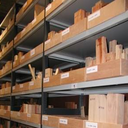
SmartwoodID aims at improving both identification success and speed by non-experts. The project aims at automating part of the wood identification process by applying artificial intelligence techniques for the analysis of wood anatomical images of timber species of the Democratic Republic of the Congo. The tree flora of Central Africa comprises 3013 species, 27 of these belong to the class 1 commercial timber species of the DRC and are actually intensively logged and traded, 20 to class 2 (have potentially a big commercial value), 44 to class 3 (are considered to be promoted) and 879 to class 4 (commercial value is not yet known). The project uses xylarium samples of all the species of the four classes and takes advantage of the power of modern deep learning approaches. It also relies on expert wood anatomical descriptions which will serve as annotated training data to develop the software.
More info on https://congobasincarbon.africamuseum.be/smartwoodid
XyloDynaCT (2020-2025)
A game-changing perspective on intra-seasonal wood formationdynamics using high-resolution X-ray Computed Tomography to elucidate leaf senescence and autumn dynamics of temperate deciduous trees in Europe (BOF)
Contact: Kobe Happaerts, Matteo Campioli, Jan Van den Bulcke
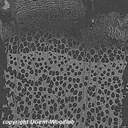
year is reached (photoperiodic threshold). The first objective will be met by (i) automating the XμCT process, (ii) identifying the degree of lignification, (iii) assessing intra-seasonal wood traits such as cell size and wall thickness etc., and (iv) implementing a time-lapse scanning on small living trees. The second objective will be achieved by analyzing data of leaf senescence and wood formation of the 10 most common deciduous species in Europe along several transects of varying environmental conditions (e.g. photoperiod, temperature, drought). Overall, the project will start a new direction for the study of wood formation and will elucidate autumn dynamics of deciduous temperate trees.
Moisture dynamics of poplar CLT (2019-2023)
Moisture dynamics and fungal susceptibility of poplar-CLT for green building (CSC)
Contact: Xiuping Jiang, Joris Van Acker
The interest for building taller all-timber structures using engineered timber materials such as cross-laminated timber (CLT) has increased substantially, especially in the framework of sustainable use of resources and the positive carbon footprint of wood materials. The specific structure of CLT panels improves the dimensional stability, bending strength and other mechanical properties, thus enabling its use as load-bearing elements in various constructions.
Poplar is of interest as fast growing tree species providing lightweight material and considered a potential species to be used in CLT as a substitute of spruce.
However, due to its low natural durability, we need to acquire sufficient knowledge on its behavior when incorporated in CLT. Within this project, we will therefore focus on moisture dynamics, which are in direct relation to the fungal susceptibility and thus decay resistance and service life of the product. The overall objective is to integrate data on the potential of poplar CLT and provide guidance on a fit-for-purpose approach for application in green building applications.
Finished projects
Timber trade of rosewood (2019-2022)
The impact of timber trade in Southern Africa on the sustainability of endangered rosewood species (FORETS)
Contact: Mélissa Rousseau, Hans Beeckman, Jan Van den Bulcke
Rosewood is a commercial term encompassing hardwood species targeted in particular to produce Chinese traditional Hongmu furnitures, a market that was worth at least USD 15 billion in 2012. Since 2009, China’s rosewood imports trend has grown exponentially and Africa has become a significant supplier with China registering a 700 percent increase in the import of African rosewood. Many rosewood (some protected by conventions or local laws) and look-alike species are difficult to identify. There is therefore an urgent need for robust identification methods of targeted species. Moreover, wood traceability, verification and control systems must be improved. The overall objective of this study is to assess rosewood species trade legality and sustainable production in Southern Africa by linking traded volumes to standing stocks.
Afrormosia: sustainable timber production and legal trade in Pericopsis elata (BOF-DOS: 2019-2023)
Contact: Chadrack Kafuti, Nils Bourland, Jan Van den Bulcke, Joris Van Acker
Pericopsis elata is one of the most valuable timber species from the African tropical forest. The species provides a high quality wood having a high natural durability, mechanical strength, and dimensional stability, all this combined with its widely appreciated decorative values. Due to intense logging activities, the species’ population has significantly decreased throughout its shifting distribution range. The species is included on the CITES Appendix II. This classification aims to ensure that the international trade of the species does not threaten its survival, suggesting that harvest operations must ensure the long term persistence of the species. However, scientific information necessary for setting up management options aiming at a sustainable yield are lacking. In this project, a multi-scale approach will be used to unravel and describe the natural productivity of the species. The species distribution, population structure, trees functioning and growth performance will be assessed in the light of climate and environmental variability to provide dynamics and site-tailored management options for a sustainable wood production.
More info can be found on the RMCA website.
XINCAST (2018-2023)
An X-ray view on the intra-seasonal dynamics of carbon storage in trees (BOF)
Contact: Jan Van den Bulcke
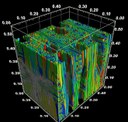
ToCoWo: Tomography of COngolese Wooden Objects (BELSPO-BRAIN: 2020-2023)
Contact: Sofie Dierickx, Siska Genbrugge, Hans Beeckman, Jan Van den Bulcke

More info on https://www.tocowo.ugent.be
MoCCha-CT: Model-coupled 4D-uCT for advanced material characterisation (FWO-SBO: 2018-2022)
Contact: Pierre Kibleur, Jan Van den Bulcke, Joris Van Acker
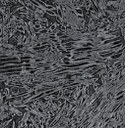
> More info on the MoCCha-CT website.
COBECORE: Congo basin eco-climatological data recovery and valorisation (BELSPO-BRAIN: 2017-2021)
Contact: Jan Van den Bulcke
The Belgian Science Policy Office funded “Congo basin eco-climatological data recovery and valorisation (COBECORE, contract BR/175/A3/COBECORE)” project brings together an interdisciplinary network of partners with the objective to establish baseline measurements necessary in long-term (retrospective) ecological and climatological research by valorising unexplored historical data.
In this four year project COBECORE will develop a multi-faceted database, by making the static analog archives of the Institut National pour l’Etude Agronomique du Congo belge (INEAC) digitally accessible in addition to extracting eco-physiological relevant plant traits from historical herbarium specimens.
> More info can be found on the COBECORE website.
Valorisation of eco-climatological data (1961-2020) for improving research on climate change and the management of Congo basin rainforests (Global Minds: 2020-2021)
Contact: Emmanuel Kasongo, Joris Van Acker, Hans Beeckman
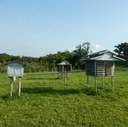
MITBRIC: MIllennial-length Temperature reconstructions based on advanced tree-ring data of BRistlecone pine: essential Input for Climate change projections (FWO junior postdoc: 2019-2022)
Contact: Tom De Mil, Jan Van den Bulcke
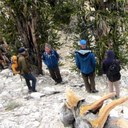
Physical properties of various selected triploid poplar clones (INBO: 2020)
Contact: Joris Van Acker, Stijn Willen
Within the framework of the selection and breeding of poplar clones for quality wood production, this study assesses some physical properties of various selected INBO poplar clones.
Physical properties are analysed by semi-automatic processing of scanned wood disks and destructive and non-destructive measurements of the strength properties.
These criteria can then added to the common used criteria as resistance to diseases, rooting capacity, soil plasticity,…
BioBuildFun: fungal susceptibility of bio-based building materials: a multi-scale assessment (FWO-SB: 2017-2020)
Contact: Joris Van Acker, Liselotte De ligne
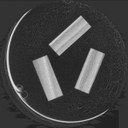
HerbaXylaREDD (BELSPO-BRAIN: 2015-2020)
Contact: Joris Van Acker
Tropical forests are in the focus of international efforts on climate change mitigation and biodiversity preservation. Up-to-date forest management, conservation and enforcement mechanisms need to be founded on solid science. Worldwide, the federal Xylarium (RMCA) and Herbarium (Botanic Garden Meise) are by far the most important reference collections for Central African forests. Still, they can both be considered 'sleeping beauties' because substantial scientific research is necessary to exploit fully the invaluable information sources and to make the collection databases compatible with international databases online available (TRY, DRYAD, GBIF, GlobAllomeTree). In order to renew, complement and strengthen the reference value of both the Herbarium and the Xylarium, HERBAXYLAREDD aims at generating knowledge, through analysis of specimens, traits and meta-data, on Central African forest ecosystems and forest products. Newly generated data will allow exploring functional strategies, growth and the genetic structure of tree species, an optimized distribution map of tree species, technological aspects of lesser-used timber species, carbon stocks of forests and energy content of Central African woody species. Given the high diversity, we will focus on the following target groups: undergrowth versus dominant forest species, lesser used timbers and species for bio-energy.
UGent-Woodlab will put their main focus on the wood technology of these lesser-used timber species with the development of an in-depth methodology to determine the dimensional stability in the first stages of the project. Later on the focus will shift to color-measurements of several timber species and the determination of calorific values and mechanical strength data.
> More info on the HerbaXylaREDD website.
TimberFrameRot (FWO: 2014-2018)
Contact: Joris Van Acker
Due to the increasingly stringent energy efficiency requirements, timber frame constructions (often as low-energy or passive houses) can be found all over Europe. Though, the circumstances (indoor/outdoor boundary conditions, composition of the wall,…) in which the constructions are used often differ. This can lead to a different hygrothermal behaviour and increase the risk on early failing by mould growth and wood rot, especially with the growing tendency to use untreated wood. At present, several simplifications and shortcomings exist in the different research fields to predict and avoid moisture related biological damage in timber frame constructions in a reliable way. By joining the know-how and expertise of UGent-Woodlab and the Building Physics Section of KU Leuven (http://bwk.kuleuven.be/bwf lead by Prof. Staf Roels), the current project aims at the development of a reliable risk assessment methodology for mould growth and wood rot on timber frame constructions. This requires an overall methodology based on fundamental research and input on different aspects. First of all, as several of the determining parameters are stochastic in nature, a probabilistic framework is proposed. Focus will be on efficient sampling methods, sensitivity analysis and metamodelling to identify the critical influencing parameters and sequences of boundary conditions. In combination with advances in hygrothermal simulation of timber frame constructions and elaborated resistance prediction models based on dynamic measurements, an overall stochastic risk assessment method is envisaged.
Silex (LIFE+)
Contact: Joris Van Acker
Construction is the largest industrial sector employer in the EU. The “cradle to grave” aspects linked with the creation, use and disposal of buildings, however, create major environmental problems. Construction activities consume more raw materials than any other industrial sector; and as a result also account for the largest share of greenhouse gas (GHG) emissions: accounting for some 40% of the total GHG emissions in terms of energy use. Furthermore, construction and demolition activities produce the largest waste stream – some 25% of European total waste (78% of which is concrete cement-based products, 11% wood). Improving the durability of different construction materials, such as concrete and wood, would allow substantial benefits in terms of raw materials use, related energy consumption and CO2 emissions, and waste quantities. The overall objective of this project is to extend the lifetime and usability of constructions made of wood and/or cement, by applying environmental friendly silicon-based water repellents. This will reduce emissions of harmful volatile organic compounds by 80-90% in comparison with state-of-the-art concrete and reduce the use of biocides in the conservation of some wood species (e.g. pine, beech).
Research on the wood quality of wild cherry (Prunus avium L.)
To meet the demand for cherry wood for high-quality decorative applications one needs qualitative breeding material. Trees from then different families of the INBO plantations in Borchtlombeek and Deinze were sampled to assess the use of some physical and colour parameters as selection criteria for breeding programs.
Physical parameters as basal area, density and heartwood, bark and tension wood portion were determined via differential weighing and image analysis of scanned disks.
The colour of sap- and heartwood of boards was measured with a spectrophotometer and expressed in CIE L*a*b* values.
Physical and calorimetric properties of various selected poplar and willow clones
Contact: Joris Van Acker
Within the framework of the selection and breeding of poplar an willow clones for short coppice rotation this study assesses some physical and calorimetric properties of various selected INBO poplar and willow clones. Sampled trees were grown under different conditions, namely in Belgian vs. Italian climate or on polluted soils.
Physical properties are analysed by differential weighing and semi-automatic processing of scanned wood disk, whereas the energy content of subsamples is determined using bomcalorimetry.
These criteria can then added to the common used criteria as resistance to diseases, rooting capacity, soil plasticity,…
High-resolution dendro-proxies as climate indicators in the tropics
Contact: Joris Van Acker, Tom De Mil
The objective is to develop highly detailed measurements of tropical tree growth archived in tree rings and to link these with phenology, life-history strategy and response of trees to their environment and climate. The research will focus on African tropical forests in the Democratic Republic of the Congo (DRC) and will further build upon the archives of phenological records of the Forest Reserve of Luki and the vast amount of material present in the Royal Museum of Central Africa (RMCA). Based on latter available information, field work will be carried out in the Forest Reserves of Luki and Yangambi, including sampling and phenological monitoring of a selection of tree species which grow over a wide range. Tree rings will be investigated using dendrochronology, anatomical research and high-end techniques resolving structural and chemical information along the growth trajectory of tropical trees. Combining all datasets (phenology, growth, high-resolution data, climate etc.) will lead to important fundamental knowledge. Mapping this response of tropical trees to climate is necessary to understand the origin of the rainforest biodiversity and to predict its fate under current environmental changes and is also highly relevant for improving conservation and management strategies of tropical rainforests and assess their role in the carbon balance.
DO-IT HOUTBOUW: Sustainable innovation in wooden buildings
Contact: Joris Van Acker
Het project DO-IT HOUTBOUW focust op elke houten draagstructuur voor applicatie in nieuwbouw, verbouwing, aanbouwen of herbouwen. Een breed spectrum van typegebouwen wordt opgenomen binnen de projectdoelstelling (alleenstaande gezinswoning, rijwoning, appartementsgebouwen, scholen, kantoren en industriële gebouwen) met steeds focus op laag energie tot energieneutrale gebouwen (EU 2020 doelstellingen). De missie van het project bestaat erin houtbouw versneld uit te bouwen (2017) tot een volwaardige en flexibele bouwwijze met oplossingen voor elk type van gebouw en/of set van eisen binnen de Vlaamse context en aldus Vlaanderen een pioniersrol te geven om deze kennis ook te valideren in een internationaal kader (2020). De hoofddoelstelling van dit project is het brede spectrum van houtbouwsystemen sneller klaar te maken om de bijna energie neutrale gebouwen van de toekomst te kunnen realiseren. Hierbij wil het project de gehele houtbouwsector en zijn toeleveranciers ondersteunen om de aanwezige natuurlijke trend van meer houten gebouwen te versnellen en te versterken (cf. economische impact). Dit laatste wil het project realiseren door specifieke, gescoorde en gevalideerde totaaloplossingen met een onderbouwd en geïntegreerd instrumentarium (modellen, meetopstellingen,…) en blijvend innovatieplatform (webinfo, technische advisering, projectbegeleiding,…) aan te bieden ter ondersteuning van de hiervoor noodzakelijke investeringen.
> More info on the project website: http://www.do-ithoutbouw.be
FlaxPreComp: Development of low-cost flax preforms for high-performance composites
Contact: Joris Van Acker
Up to now flax fibres for composite applications have been processed by traditional fibre extraction processes that were originally aimed at textile applications. Those treatments intended to come to fine and pure fibres forming a strong yarn are detrimental for the mechanical properties of the flax fibre itself as each extra processing step induces more damage to the fibre. Moreover, the strong twist of the fibres in a yarn caused misorientation and with that reduced stiffness and strength of the resulting composites. The goal of this project is to develop price competitive flax based preforms for high-quality composites. To reach this objective, first an evaluation method must be developed to select suitable flax fibres for composites. Furthermore the development and stabilisation of a continuous, homogeneous flax tape based on scutched flax and the optimisation of the fibre pre-processing (retting, braking, scotching) for the new developed process is planned.
I-Love-T: Inoculation of local fibre rich flows for the production of sustainable cultivation substrates
Contact: Joris Van Acker
Ornamental plant cultivation has two important bottlenecks that can determine growth potential of the sector: the high dependence of peat for the production of qualitative substrates, while the availability of peat is not always guarantied and the raising restrictions on plant protection products. For the realisation of the production of sustainable substrates, this projects looks for the development of an innovative peat replacer that has disease and/or infestation suppressing properties by inoculating a biocontrol fungus on local available plant fibres (reed, miscanthus and flax shives).
Trees4Future: designing trees for the future
Contact: Joris Van Acker
The four-year Trees4Future project aims to integrate major forestry resources and infrastructures, to provide the European forest-based and wider research community with easy and comprehensive access to currently scattered sources of information and expertise. UGent-Woodlab gives access to the X-ray tomography scanner and the DSC-TGA equipment (see Equipment page).
The project will create a centralized access point via its web portal to major European databases in the area of forest genetics and forest ecology, and start to develop common protocols and reference standards for traits and species. Calls for transnational access will be made, so that researchers can take advantage of the joint expertise, services and data of the 28 partners in the project. (source: http://www.efi.int)
> More info on the project website: http://www.trees4future.eu/
A combined experimental and modeling approach of the hygro-mechanical behavior of wood-based panels
Contact: Joris Van Acker, Wanzhao Li
Wood-based panels are increasingly used in the building industry both for outdoor as well as indoor applications, more specifically as roof and wall sheathing. These wood-based panels are as such exposed to a whole range of environmental conditions in service. Their structural bearing capacity is well-known in standard mean circumstances, but the influence of temperature, moisture, related dimensional changes and possible subsequent biodegradation on their strength is only revealed to a limited level based on fundamental knowledge.
A crucial completion to the research on wood-based panels, more specifically particleboard and oriented strand board, is the elaboration on a fundamental model starting from the structural composition of these panels. This research foresees as such in an integrated view on panel behavior by modeling the mechanics of these wood-based panels like OSB in relation to the impact of moisture dynamics under specific climates.
Performwood
Contact: Joris Van Acker

Historical field data will be reanalysed to extract more information on performance and this will be brought alongside service life expectation information gathered from various user groups. It will connect the material resistance with the moisture risk to inform on service life expectations.
Palaeobotanical reconstructions of Central African forest boundary dynamics
Contact: Joris Van Acker, Wannes Hubau
Charcoal can be formed during natural fires (lightning) or human-induced fires. It is an inert material which can be preserved in soil layers for a very long time. Moreover, as many anatomical details are preserved, it is possible to identify individual fragments. However, this 'natural archive' has never been explored in Central Africa.
Therefore, this PhD project aims at the development of Central African ancient charcoal analysis. Charcoal fragments are collected in soil profiles in natural environments and in ancient human settlements. Some of these fragments are radiocarbon dated and visualised using Reflected Light Microscopy (RLM), Scanning Electron Microscopy (SEM) and Computed X-Ray Tomography (µCT).
Furthermore, we developed a transparent charcoal identification protocol using large databases, wood anatomical descriptions (InsideWood) and the World's largest reference collection of microscopic thin sections of Central African wood specimens (RMCA, Tervuren). As such, we reconstruct ancient environments and we assess past vegetation and climate change.
NovelTree
Contact: Joris Van Acker
NOVELTREE is a EU financed project designed to enable significant genetic improvement of the composition and characteristics of forest products to satisfy the needs (quality, quantity, sustainability, vulnerability) of consumers and the forest-based sector. UGent-Woodlab specifically helps in developing a high-throughput tool-chain for characterization of wood material for selection purposes.
Plywoodmoisture
Contact: Joris Van Acker
Moisture dynamics of plywood is used to identify critical parameters in production and composition of plywood to come to better performance related to limited time of wetness. Furthermore, the effect of coatings on the durability and service life of coated plywood products is determined.
An assessment engineering tool is developed during this short term project. In the long run this draft tool will be extended to a ‘predictive engineering tool’ for adequate prediction of moisture behaviour and related service life prediction of optimised plywood. As such this project enlarges the knowledge on the moisture behaviour of plywood on a fundamental level as well as tries to come to a practical approach for plywood testing regarding its moisture dynamics, which is related to durability.
Development of a systematic colour assessment for the optimisation and innovation at the production of oak wood furniture and parquet
Contact: Joris Van Acker
As furniture and parquet producers have complaints about oak wood elements in a product with a too deviant colour, one needs an objective colour measurement to communicate unambiguously.
The CIE L*C*hab colour space is the most appropriate to describe wood colour objectively. In this project the spectrophotometer that could group specimens with most accordance to visually determined colour groups was selected, various colour grading algorithms to sort specimens were evaluated and a vast measuring methodology for measuring larger wood samples was developed.
Finally the colour change due to transparent finishes and due to weathering of finished and unfinished surfaces was analysed.
Woodexter: Service life and performance of exterior wood above ground
Contact: Joris Van Acker
The main objective of WoodExter was to develop a practical tool for design of wood constructions with respect to durability and service life, based on a similar approach as used in structural design which is familiar to engineers and architects. It was decided to focus on decking and cladding, two major end uses for wood as two test case products to rigorously assess the methodology. The key outcome of WoodExter is a guidance document “Engineering design guideline for wood in above ground applications”.
> more information can be found in following document.
Optiwoodcoat: Optimalisation of service life, maintenance and certification of future-oriented exterior wooden joinery by durable use of water based coating systems
Contact: Joris Van Acker
Both consecutive projects aimed at establishing an assessment methodology for wood coating systems with focus on setting requirements for an adequate performance.
The developed assessment methodology is based on the European (pre)standards for exterior wooden joinery coatings taking into account physicochemical weathering, moisture dynamics and biological aspects. For each single test minimal requirements for a sound wood coating system are defined. However, to predict the performance of a coating system for exterior joinery during natural weathering a combination of these requirements is used.
Based on the criteria developed in the project a model to certify finished wooden joinery has been drafted.
Cultivation and processing of flax as a basis for a bio based economy in Flanders
Contact: Joris Van Acker
Flax is used for fibre and oil applications, but the different sectors are not involved in each other’s activities.
This project consulted flax growers, the various users, researchers and literature to make a state of the art of the knowledge of the flax plant and cultivation and the common and potential future uses.
A gap analysis reveals to what extent the present knowledge and technology can meet the needs and questions from the flax sectors. Interfaces between the two sectors and common objectives will be used to prepare research towards the cultivation of a flax plant that can be optimally exploited.
Biodegradability of wood polymer composites
In contrast with outdated statement that wood particles in WPC are completely encapsulated and inaccessible, moisture sorption of and even fungal growth on WPC is often demonstrated.
As standards for fungal testing of this material refers to standards developed for wood based panels, the moisture behaviour of WPC was compared to that of wood based panels.
Moisture sorption of WPC is significantly slower, but reaches after levels of moisture content all above the minimum level for fungal growth. This study indicated that a specific standard for testing biodegradability of natural fibre composites must be developed, taking this alternative moisture behaviour into account.
Advanced composites based on modified natural fibres - Accessibility and reactivity of natural fibres for materials with improved mechanical and physical performance
Poor fibre/matrix adhesion is an obstacle for high performance natural fibre composites. Several fibre treatments were tested with flax and treated flax being processed into epoxy or polypropylene composites.
The effect of the treatments was visualised by SEM and micro-CT images of fibres and broken composites. Three point bending tests and pull out tests were used to assess the strength properties of the resulting composites.
Concerning durability, the moisture dynamics of the treated fibres and the dynamical stability of the composites were determined, as well as the biological durability of treated fibres and its composites.

